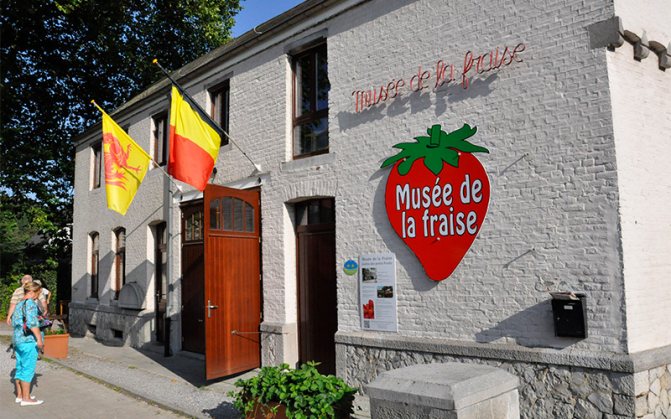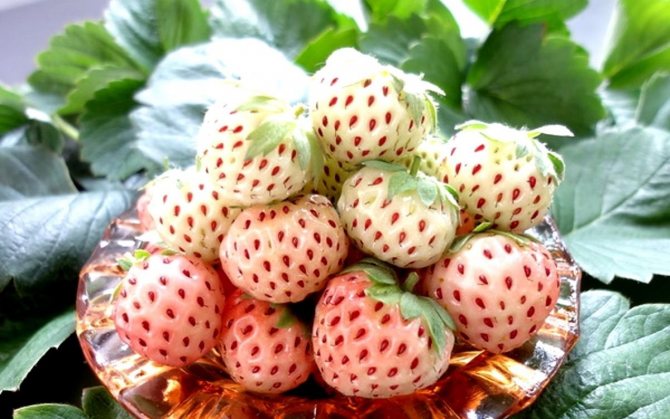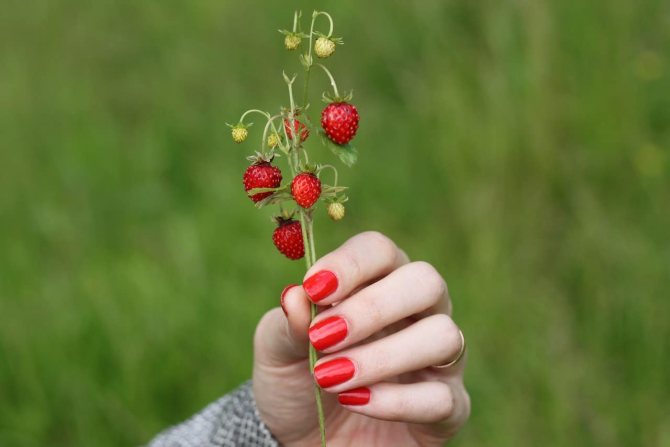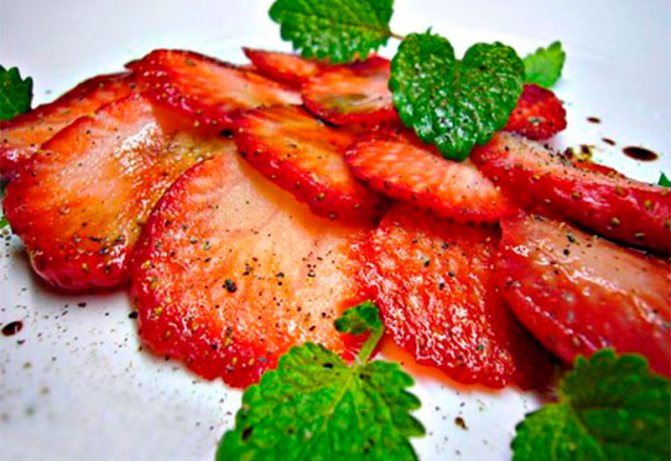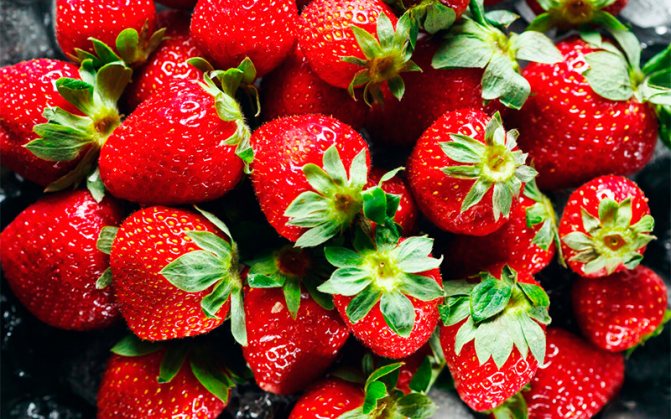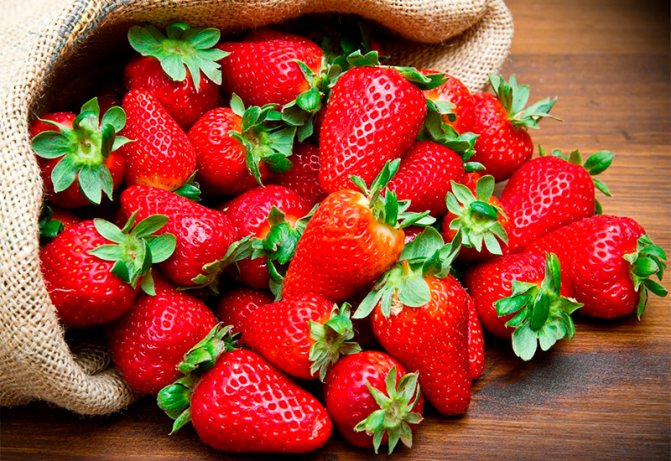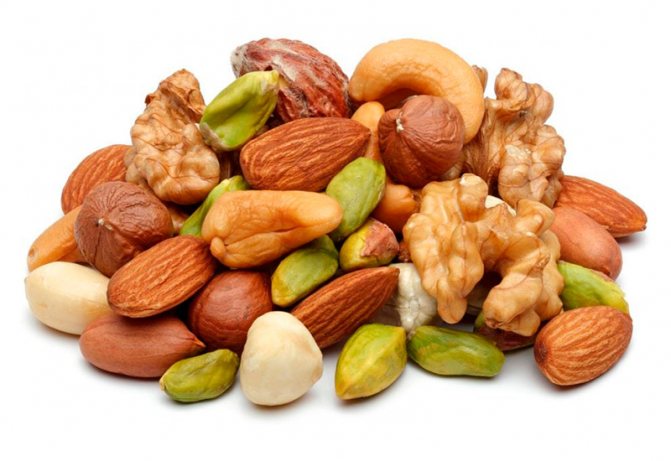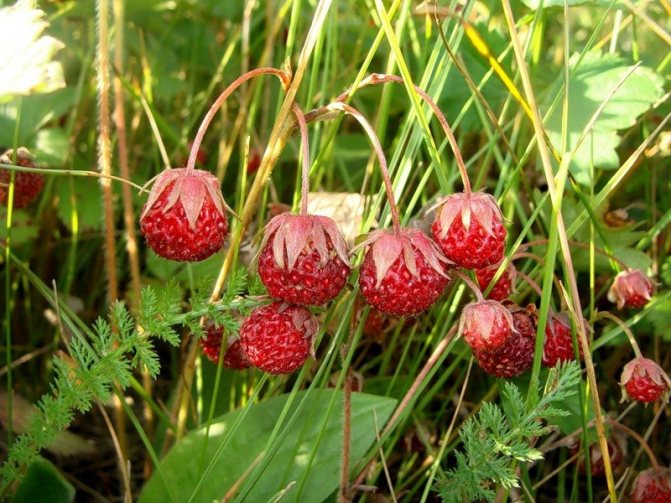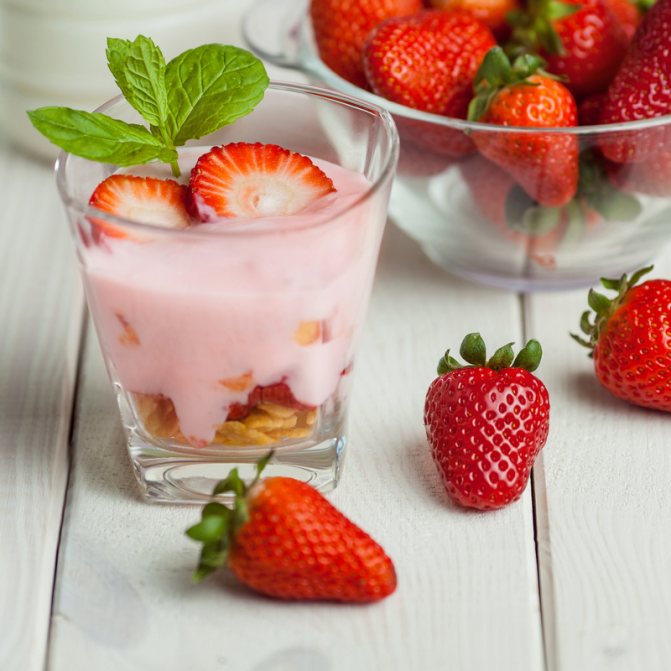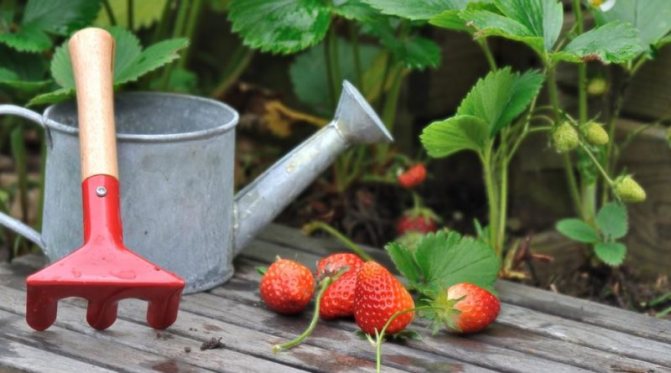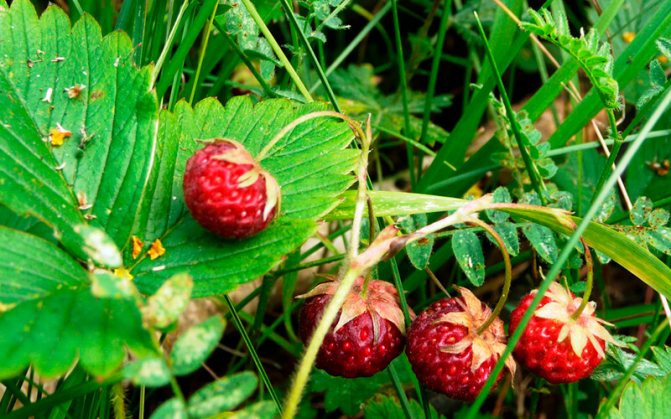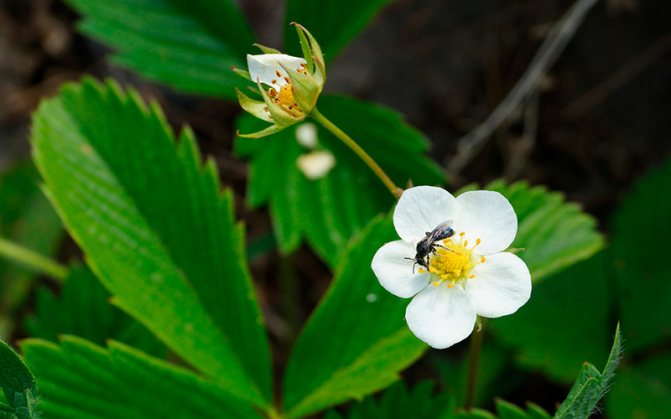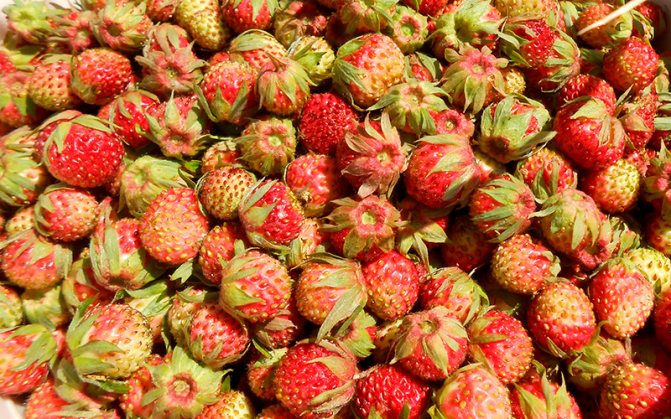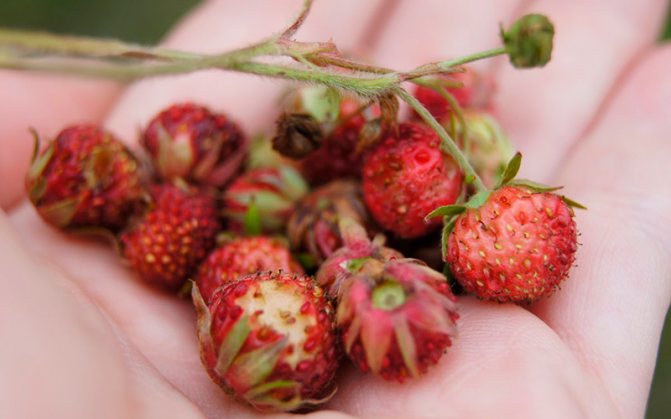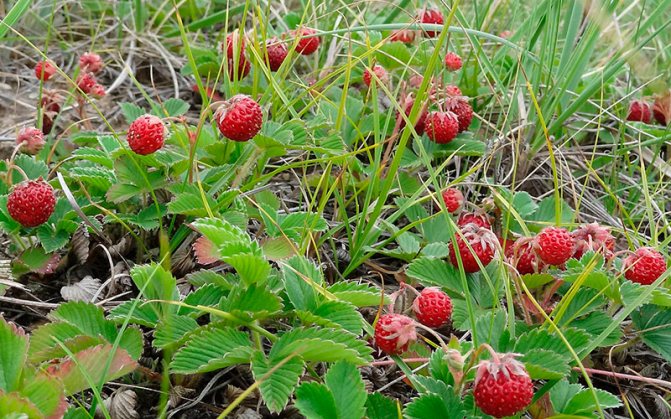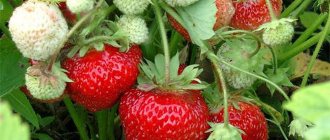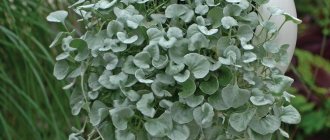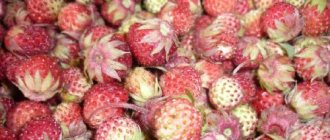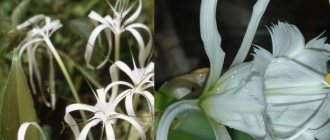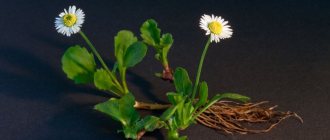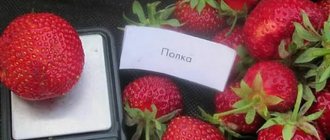Home / Garden / Berries
Back to
Published: 29.10.2019
Reading time: 6 minutes
2
148
Almost everyone knows, and many have tasted, aromatic wild strawberries. But it turns out that on the edges of thickets, in meadows and glades, another berry also grows - forest strawberry, which has an excellent taste. It also represents the Pink family, a large genus of Strawberries, and is a wild species.
- 1 Description and main characteristics
- 2 Understanding the Differences
- 3 The benefits of wild berries
Why collect
Collect it not only as a delicacy for fresh consumption. It is used for preparations for the winter, there are a lot of recipes for making preserves, jams and compotes, it is well preserved frozen. The leaves and flowers of this plant are used in cosmetology and medicine.
Note! Dried berries are usually used as a diaphoretic for colds and as a means to increase immunity, and tinctures and decoctions of leaves and flowers - to fight headaches, as the prevention of cardiovascular diseases and to reduce blood pressure.
It is recommended to include this berry in the diet for people with joint diseases, diabetics and people with impaired thyroid function. For cosmetic purposes, fresh berries are used to prepare various anti-aging masks and lotions. Also used to treat acne and remove freckles and age spots.
Beneficial features
Wild strawberry
Fresh berries have a high content of iron, potassium and magnesium, as well as B vitamins and vitamin C. The iron content in wild strawberries is an order of magnitude higher than in grapes and apples.
A rather high content of ascorbic acid is noted in the leaves of forest strawberries. They also contain essential oils and tannins. For this reason, strawberry leaves are an important medicinal ingredient that is often used for many diseases.
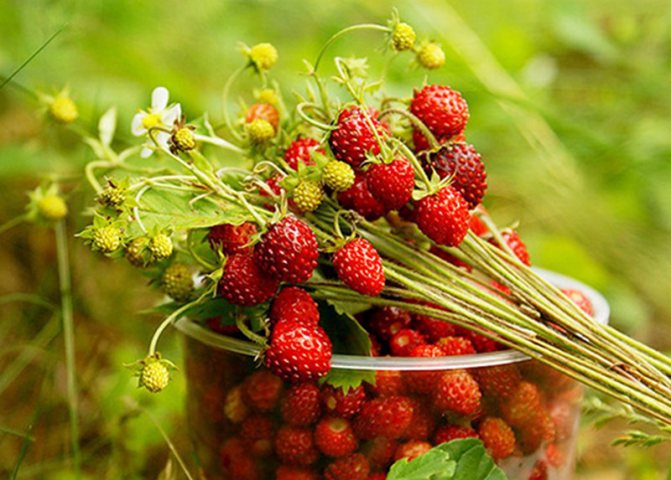
Helps heal wounds
Fresh leaves can be applied to all kinds of wounds and ulcers. They have a positive effect on hemorrhoidal tumors. An infusion can be prepared from the leaves of forest strawberries. For this purpose, boiling water and 50 g of raw materials are taken. The remedy is insisted for about 4 hours, then taken 3 times a day before meals.
An infusion of the leaves of a forest plant has a very positive effect on cardiac activity, helps in the restoration and normalization of metabolism. In some cases, the infusion helps in the removal of kidney stones. It is very useful for those people who have any respiratory diseases.
For your information! Wild strawberries, with all their positive qualities and properties, may not be suitable for certain people and have contraindications. In such cases, the berry can do, perhaps, more harm to the human body than the usual benefit.
Strawberries are considered a berry that can lead to allergic reactions if a person has a predisposition to this. To avoid such manifestations, it is necessary to use it, mixing it with milk or sour cream.
The use of wild strawberries is not recommended when there are any diseases associated with the gastrointestinal tract, including the duodenum.This is due to the fact that the fruits of wild strawberries significantly increase the acidity.
Women who are breastfeeding or pregnant women need to eat a little of these strawberries and watch for possible reactions.
Information from biology
Pear Forest Beauty
Real strawberries do not exist in nature. The botanical name for the wild strawberry is Green Dugout (Fragaria viridis), or it can also be called Polunitsa, and the Muscat Strawberry (Fragaria mochata) is also considered a strawberry.
Interesting! Wild strawberries grow almost throughout Russia, for example, meadow strawberries and nutmeg strawberries are more widespread in the middle zone, and steppe strawberries in the southern regions, closer to the Caucasus.
Strawberries crap or crap (Fragaria moschata)
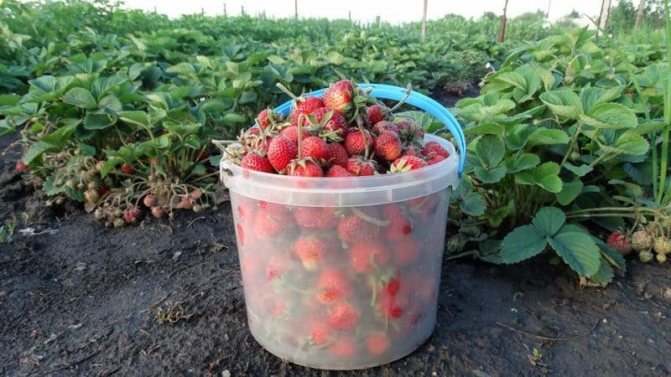

Shpansky strawberries or shpankas are another name for domesticated strawberries, more popularly known as strawberries. This variety of strawberries was brought to Russia from Europe. Initially, only green strawberries were grown and eaten in Russia.
Shpanki strawberry bushes are tall, sometimes even 40 cm in height. They grow quite strongly, blowing the mustache in all directions. Flowers are located in the same plane; bisexual inflorescences are often found on one plant.
Some of the most popular varieties:
- Joseph Mohammed;
- Alba;
- Octave;
- Malvina;
- Bohemia.
Spansky strawberries are usually very frost-resistant and can also endure extreme heat. Some varieties are capable of bearing fruit either for a very long time in a row, or several times a season.
The difference between wild strawberries and wild strawberries
What is the difference between strawberries and strawberries? Sometimes some people do not see the difference between forest strawberries and wild strawberries, they are often confused, however, there are quite serious differences between these berries. What is the difference between strawberries and strawberries is determined by the following parameters:
- You can distinguish these fruits if you look at them at least once. Strawberries have a rounder shape, somewhat similar to a ball, this determines its name - strawberry. While the strawberry is elongated, it sharpens towards the bottom;
- In strawberries, the stalks are always bent away from the fruit and look up, and on strawberries they are pressed against the berry;
- When strawberries are torn off, the tails often remain on them. Strawberries can be picked without tails. It is believed that the latter is easier to handle after collection, no additional cleaning will be required;
- The leaves of these berries are completely different in shape;
- The aroma and taste of wild strawberries and wild strawberries is different, each has its own individual and unique;
- The difference between these berries from each other is called the different colors of their fruits. Strawberries are scarlet, very bright in color, their color is uniform, while strawberries have a red berry color, more in darkness, and the color is far from uniform;
- Smaller strawberries are believed to take longer to harvest than larger strawberries. Strawberry meadows are more common than strawberry meadows;
- Strawberries have denser berries, and strawberry fruits are juicy.
Description of the garden strawberry and victoria plant: mustache, leaves, fruits (berries) with photo and video
In botany, the description of strawberries and Victoria boils down to the fact that it is a perennial plant that reproduces vegetatively with the help of modified shoots - mustaches. Indeed, when creating favorable soil and microclimatic conditions, the life of a garden strawberry plant surrounded by rooted daughter rosettes can theoretically be considered infinite. But in our harsh conditions of acute lack of heat and excess moisture in the autumn-winter period, the real life of plants is only 6-8 years.
In this description of garden strawberries with a photo, you can glean basic information about the culture that will help you organize the proper care for it in your garden plot.
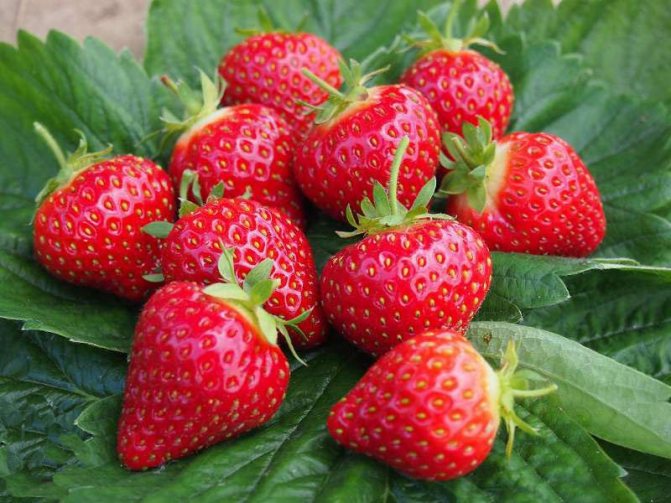

The fruit of the garden strawberry is formed as a result of flowering and pollination. This is a fleshy berry with testes sunk in the pulp. Garden strawberries can weigh from 5 to 100 grams. Painted in bright orange, pink, crimson and red colors. The active period of preparation for fruiting takes 2 years. In total, the yield is maintained for 5 years. The period when the plant produces a full harvest of garden strawberries is even shorter. With the long-term growth of the bush in one place, surrounded by rooted rosettes, the soil is quickly depleted, viral infections and genetic mutations that weaken the plants accumulate.
The term of justified exploitation of Victoria berry and garden strawberry (when the harvest obtained compensates for your labor and material costs for care) was previously considered no more than 3-4 years, and now for many new varieties of foreign breeding it is even 1-2 years.
Botanists classify strawberries as evergreens. Indeed, the dying off of old leaves and the regrowth of new ones occurs continuously, so the bush always looks green. Strawberries overwinter in a leafy state. The leaves of the garden strawberry formed in the fall remain green and continue to photosynthesize in the spring. Leaf mass and horns - thick, shortened shoots - are the organs for the deposition of nutrients. This means that for a successful overwintering, it is very important to build up and maintain a healthy and full-fledged leaf mass by autumn.
Garden strawberries grow whiskers throughout the growing season. To form a full-fledged crop, they must be removed. Peduncles are removed on bushes intended for obtaining planting material.
See what garden strawberries look like in the photo, which shows flowers, fruits in the form of berries and a mustache:
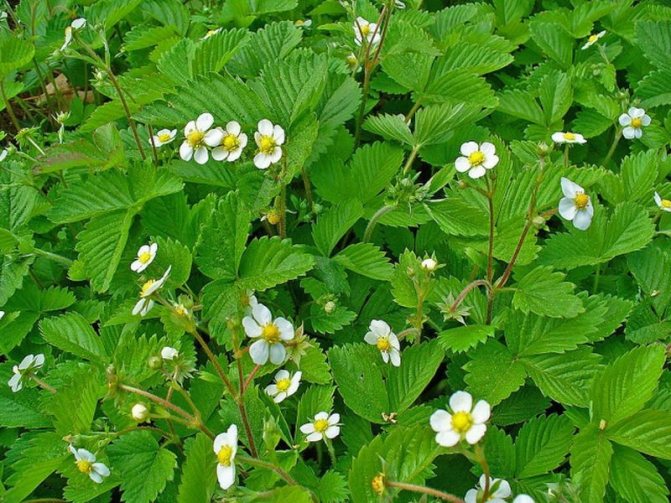

strawberry blossoms in the photo
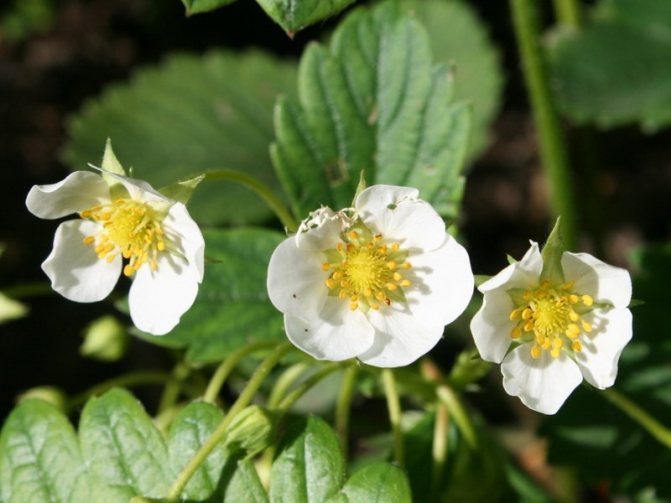

In the photo, strawberry flowers
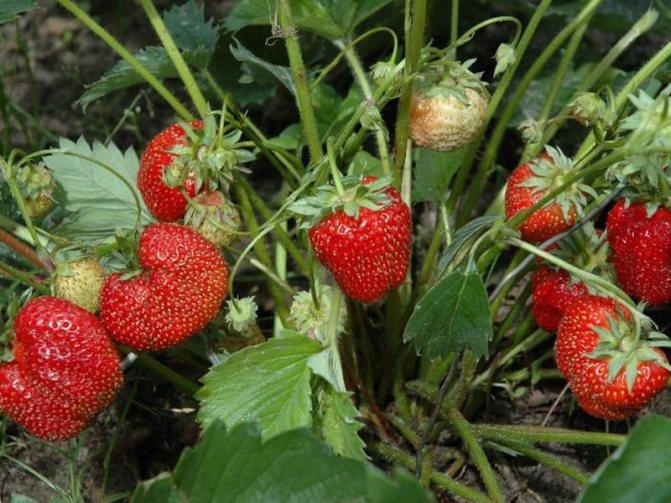

Garden strawberry pictured
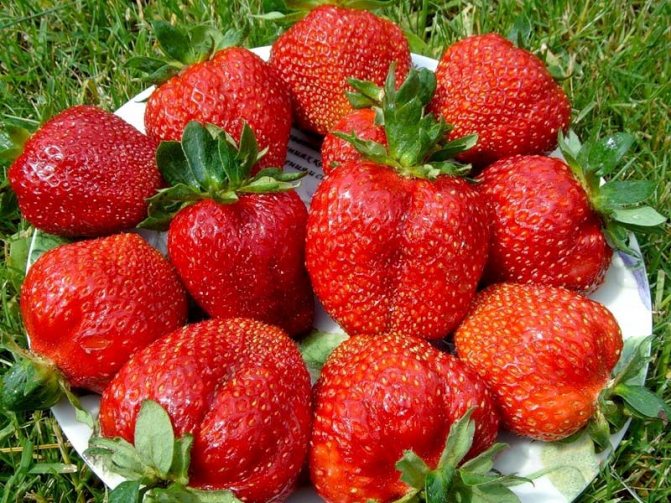

The fruits of garden strawberries in the photo


Garden strawberry grows a mustache in the photo
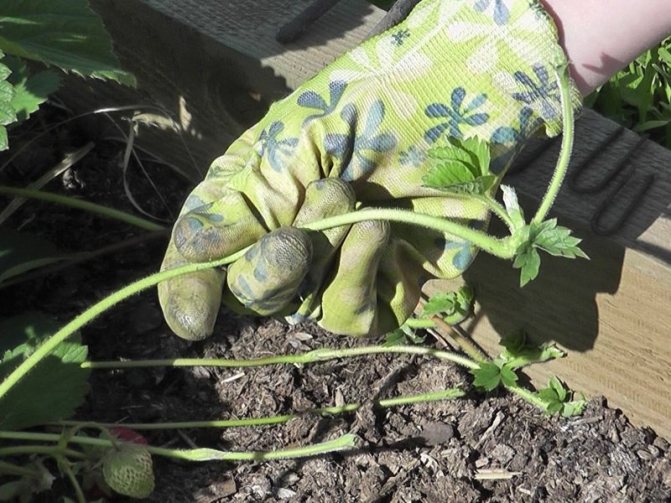

Mustache of garden strawberries in the photo
The root system of strawberries is fibrous. The majority of the roots are located in the soil layer no deeper than 25 cm, from which we conclude that it is difficult for plants to obtain moisture from the lower layers. Therefore, when hot dry weather is established, strawberries need regular watering.
Forest strawberry season
Knowing when meadow strawberries ripen, you can go to pick them, and after that make a great jam for the winter or rub with sugar, or you can simply diversify your table with a delicious and, of course, healthy berry. In these terms, the area of picking berries plays an important role, because in different regions of Russia they may differ. For example, in the Urals, the fruits of this plant begin to be harvested from mid-June.
Important information! This plant does not have a very long fruiting time - as a rule, it is only a week. After that, the berries will be gone.
It happens that tasty fruits may ripen a little later due to weather conditions that are not very favorable for their rapid development. This can be lack of sunlight or prolonged rains. But the opposite can also happen, when ripening occurs ahead of schedule. This may be the case if during the growth the plant had enough moisture and heat in excess.
In southern areas, wild strawberries are ready for harvest in May; in the suburbs, where the sun is much less, strawberry lovers go to the forests only in the very middle of July.
Additional Information! The berries of a forest delicacy are preferable to pick in the morning, at a time when the dew has already melted. The fruits must be processed on the day of harvest, as they are very tender.
How to collect
Forest strawberry is a berry that can be easily crushed, and it will lose its attractive appearance, and this can also affect the taste of the fruit. For this reason, it is necessary to collect forest strawberries in containers that are low and rather wide in size. The berries should lie in a small number of layers, and the less, the better, so that there is no pressure on each other.
It is recommended to use baskets made of birch bark or tuyes when harvesting. In this case, the fruits have good air access, so they are sufficiently ventilated. The low temperature contributes to the preservation of strawberries, which does not rise in such containers.
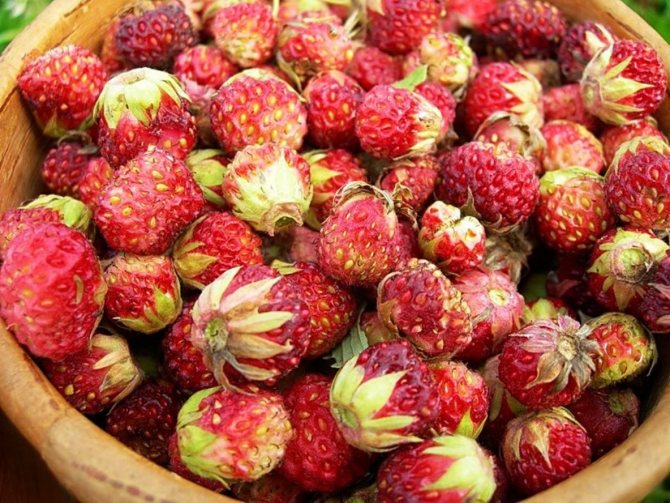

Harvesting
Also for this purpose, plastic containers may well be suitable if they have multiple holes. When it is necessary to collect a rather large volume, it is best to use wooden boxes, which are also low. In the event that there is nothing from a suitable container with you, except for the most ordinary bucket, you need to try to come home as soon as possible so that the berry does not have time to crush over a long period of time.
In the absence of a container for collection, field strawberries are cut directly from the branches and the berries are picked when they get home. Cutting of berry branches is done for the reason that it is very difficult to break it off and you can pull out the entire bush with roots. It is by no means recommended to do this, since this destroys the plant and is considered barbaric among summer residents.
On a note! Large harvesting of wild strawberries is not possible due to the low yield of the berries and their small size.
Decorative varieties
Pink Panda
The unpretentious Pink Panda adorns the complex soil of the site with bushes with bright pink flowers amidst abundant greenery. Small but fragrant berries.


Cascade, Garland
The curly branches of the Cascade and Garlands with bright red flowers, with an abundance of bright scarlet elongated berries and lush leaves are used for landscaping areas.


Do I need to clean
The harvested crop, after being brought home, is cleaned of green sticks and leaves. This is considered the most correct and hygienic, but many do not perform this procedure, thinking that they can do without it. Of course, nothing terrible will happen if this is not done, on the contrary, many housewives believe that greens give a certain piquant shade to cooked jam. It happens that there is simply no energy or time to tear off the tails.
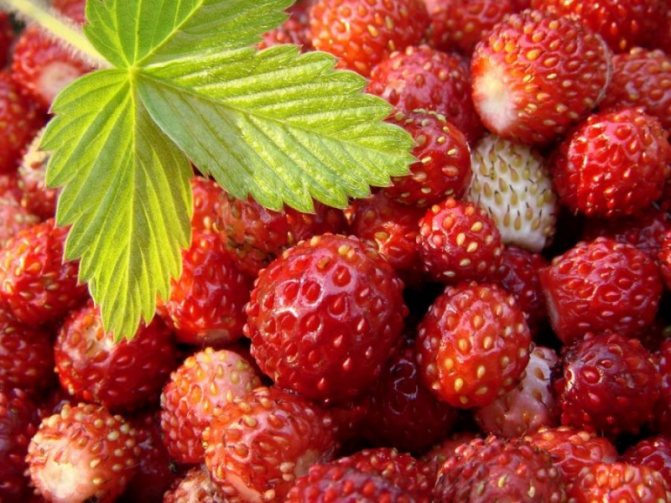

Peeling strawberries at the discretion of the hostess
In the event of a sepal break, strawberries are laid out in a room in which there is free access to air, or it is periodically ventilated. Put the berry on paper and dry it. Greens torn from berries are often used to brew aromatic and healthy tea or add to a variety of infusions and decoctions.
What is a dugout?


Zemklunica is still quite rare, but, nevertheless, a hybrid of classic wild and home strawberries (strawberries) is gaining popularity. This variety was bred specifically to obtain the highest quality fruits, bountiful harvests.
These varieties have absorbed the best qualities of strawberries (aroma and useful properties) and strawberries (large fruits, abundant fruiting).
The earthworm reproduces well, it takes root quite easily on most types of soils, therefore it is considered one of the most promising varieties of this garden culture.
Popular varieties:
- Penelope;
- The merchant's wife;
- Gift;
- Knight.
The most important thing to pay attention to when growing all varieties of earthworms: sufficient lighting (because there will be no fruiting in the shade), the most frequent feeding.
Do I need to wash
After the strawberries are cleaned of the remaining greens, which usually yield quite easily, they are washed in medium temperature water and spread on rags, paper or towels.
You can also immediately use a specially prepared clean container when collecting forest strawberries, while trying to prevent various debris from getting there, such as twigs, leaves and various insects. In this case, there is no need to sort out the strawberries, as well as washing. It is immediately, without subjecting any preparatory processing, used to prepare compote or jam.
Advice! It is still recommended to wash meadow strawberries after harvesting. If it happened that on the way home the berries nevertheless crumpled, but they were collected with care and attention, that is, they were not thrown into the container, but carefully folded, you can not wash the strawberries and immediately cook the jam.
Collecting the berries of this useful plant is not considered too easy, however, the positive emotions from this activity more than cover all the difficulties. In addition, strawberries are very tasty, jam and other sweets are made from them, they are also a remedy for many ailments. When the useful properties of a plant have been studied, and it is harvested for the winter, according to the rules, you can buy a tasty and healthy product at home at no special cost.

